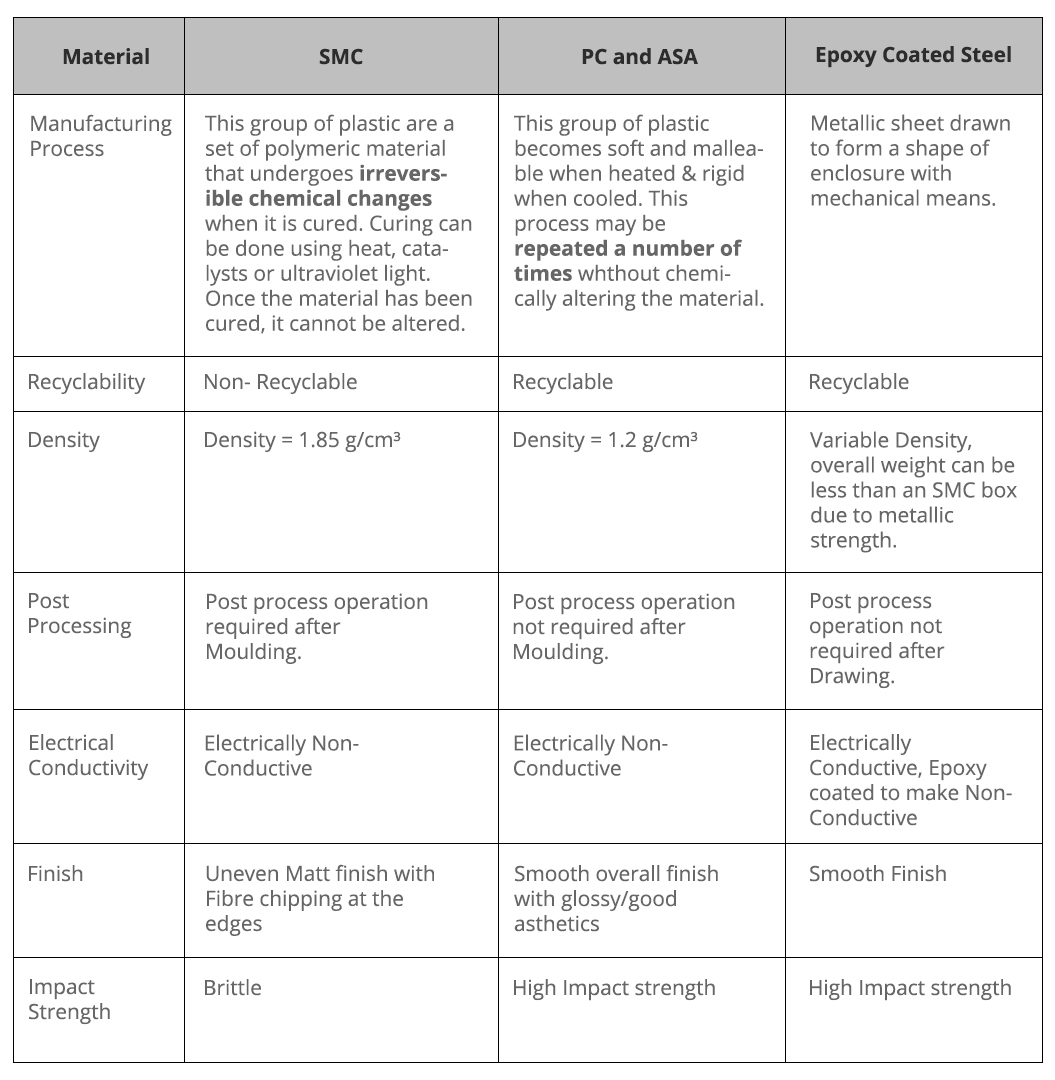What is an Electrical Distribution Box?
A distribution box is a key component of an electrical supply system. From a single, common enclosure, it helps to divide an electrical power main feed into multiple subsidiary outgoing connections that can be used to provide electrical connections to individual homes, buildings or for other requirements.
What are the key material performance requirements of an Electrical Distribution Box?
Due to their application in electrical systems, the material composition of Distribution Boxes has performance requirements that need to be met in order for the box to be compliant to Axis Quality Control and customer requirements. The major requirements are as follows:
1) Flame retardant with Glow Wire Flammability Index at 960°C as per IEC 60695 to ensure that any flame outside the box cannot enter inside and damage equipment and also to prevent any flame within the box from spreading outside.
2) The material should sustain a 2kV current for one minute without damage so that the box can withstand surge voltages.
3) The material should be heat resistant at 70°C and Resistance to tracking at 175 Volt.
4) The material should be mechnically strong so that the box does not crack or get other damage due to impact.
Material Options for Electrical Distribution Boxes
The three most popular materials used for Electrical Distribution Boxes are Thermoset Plastics such as Sheet Molding Compounds (SMC), Engineering Thermoplastics such as Polycarbonate (PC) and Acrylonitrile Styrene Acrylate (ASA) and Epoxy Coated Steel used to make Metallic Deep Drawn Boxes.
We compare the properties of these three groups in the table below:




Conclusion
When comparing the material properties of SMC, PC and Epoxy Coated Steel, there are a few differences between the materials that quickly becomes apparent. There are several factors which lead to SMC seeming unfavourable compared to the other materials:
• The non-recyclability of SMC as opposed to the other materials means that it has a bigger environmental impact and it also leads to higher production costs because rejected items cannot be recycled and reused.
• The weight of an SMC box is also the highest amongst the three options which leads to increased transportion and product cost.
• Post-processing which is only required for SMC leads to higher product costs.
• An uneven finish for the SMC box means that it is not aesthetically pleasing.
• Low impact strength compared to the other material is also a negative point towards SMC.
Taking the material properties into account and relating them to the performance criteria for Low Voltage Electrical Distribution Boxes, along with product cost in mind, it becomes clear that Engineering Thermoplastics such as Polycarbonate (PC) and Acrylonitrile Styrene Acrylate (ASA) are the best materials for the application. Metallic Deep Drawn Boxes made from Epoxy Coated Steel are also a good option for these Distribution Boxes.
Axis provides a wide range of lv distribution box options that can be used in various low voltage applications. Each lv distribution box is designed to offer durability, weather resistance, and safety in demanding environments. You can also view the application of our distribution boxes below. Our solutions cater to residential, commercial, and industrial electrical setups

Axis can also provide Metallic Deep Drawn Boxes made to customer specifications.
To contact us, or for more information, please send us an email at sales@staging.axis-india.com.

